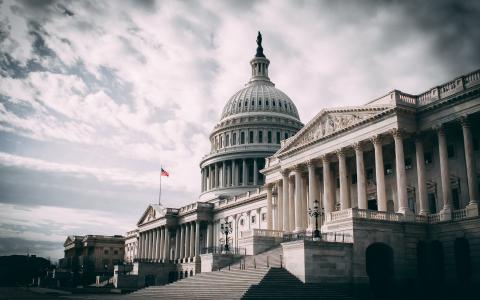
As the 116th Congress winds down, Capitol Hill is gridlocked on pretty much every issue and many Republican lawmakers are refusing to even acknowledge Joe Biden as the President-elect.
But there is hope of bipartisan compromise – for some lawmakers at least – on the issue of retirement.
The House Ways and Means committee recently unveiled the Securing a Strong Retirement Act of 2020 to “build on the landmark provisions in the SECURE Act,” said Committee Chairman Richard Neal (D., Mass.) in unveiling the bill last month.
The SECURE Act was another bipartisan bill lawmakers successfully squeezed through at the end of 2019 as the rest of Washington was focused on President Trump’s impeachment inquiry.
Neal’s Republican counterpart on the committee, Ranking Member Kevin Brady (R., Texas), told reporters after the election: "I'm hopeful too that there's such a strong bipartisan support for a new retirement security bill that we can move that quickly.” Many of the provisions have support in the Senate in the form of a bill championed by Sen. Rob Portman (R., Ohio) and Sen. Ben Cardin (D-Md.) introduced earlier this year.
“This continues that sort of tradition of Republicans and Democrats working together on retirement savings,” said Andrew Biggs, a retirement expert and resident scholar at the American Enterprise Institute, noting that it’s a contrast to “pretty much every other area of government these days.”
A focus on automatic enrollment
Perhaps the most significant provision in the bill – unofficially called Secure Act 2 – is a rule pushing new employees to automatically enroll in their company’s retirement plan if one is offered. Employees could opt out, but the default would be enrollment.
"It's an embarrassment that we don't have that yet," says Christian Weller, a professor at the University of Massachusetts, of automatic enrollment. Weller said he supports the existing bill but wishes more would be done “to push the envelope a lot harder when it comes to retirement savings" for communities of color.
Many current workers, notably the nearly one-third of private sector workers who don’t have access to a retirement plan at work, would not be impacted by the change. In addition, current retirement plans are grandfathered in and there are a range of exceptions for different business types like small or new businesses.
The bill would also push up the age for mandatory distributions in all private retirement plans (including 401(k)s and IRAs). The SECURE Act increased the required minimum distribution age to 72, from 70. The new bill lifts it to 75.
Other provisions include changes to the SAVERS credit, which lets certain lower-income individuals get additional tax breaks when they save for retirement. This change would simplify the program and index the credit to inflation.
"Generally, making that SAVERS credit easier to use is the right direction and inflation indexing is that next step," says Weller.
A ‘clearinghouse’ of lost retirement accounts
Another provision in the bill makes it easier for employees to find their lost retirement accounts by creating a national database. The provision would help workers who move from company to company keep track of their retirement accounts. It would also help workers who move from state to state who participated in the different state-level plans (state-level IRA plans have been gaining traction around the country). The question is whether Washington will need to step in to create some sort of national retirement option for workers who don’t have access through their jobs.
"Having a clearinghouse by the time they retire will allow them to actually cobble this together," Weller says. "Washington will have to act at some point.”
“There's no particular reason why this would be done at the state level rather than the federal level,” says Biggs.
A ‘very middle of the road bill’
The bill has bipartisan support but without a high profile, which might be key in getting it passed in the final weeks of Trump’s term.
“It's a very middle-of-the-road bill, which you would expect from a bipartisan bill,” says Weller.
Biggs notes that, like the SECURE Act, it makes incremental changes to the private retirement system but skirts the much more contentious issues like Social Security and the precarious fiscal state of many private pension plans.
Pointing to looming questions about how to shore up Social Security and many of these multi-employer pension plans, Biggs says: “where things get divisive is how you deal with the mistakes of the past.”
This article originally appeared on Yahoo! Finance.



